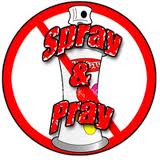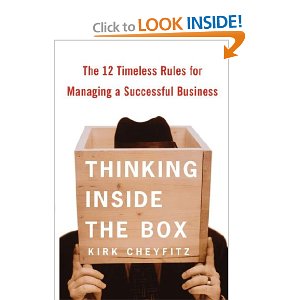 The concept of “spray and pray” in resource development is simply sending out many appeals (aka shotgun effect), and then waiting for (aka hoping and praying) that enough donors respond so that you can make your goal. “Spray and pray” doesn’t just refer to direct mail. Back in the day, I used it in annual campaigns where I asked fundraising volunteers to identify five people from their social network, sit down with them in-person, and ask for a pledge or contribution. If your fundraising program is still loaded with “spray and pray” strategies, then you’re probably struggling because those days are long since over.
The concept of “spray and pray” in resource development is simply sending out many appeals (aka shotgun effect), and then waiting for (aka hoping and praying) that enough donors respond so that you can make your goal. “Spray and pray” doesn’t just refer to direct mail. Back in the day, I used it in annual campaigns where I asked fundraising volunteers to identify five people from their social network, sit down with them in-person, and ask for a pledge or contribution. If your fundraising program is still loaded with “spray and pray” strategies, then you’re probably struggling because those days are long since over.
I decided to blog about this topic today because it has now come up in conversations with clients and fundraising professionals and in other various ways (e.g. things I read, etc) more than just a few times over the last six months.
Why? Why? Why?
I’m not sure that I care about “The Why?” A friend of mine used to say all the time — “It is what it is” — which was his cute way of saying “It doesn’t matter because getting to an answer doesn’t change the fact that you still need to address the issue.”
For those of you who are still searching for answers, I encourage you to not think too hard about it. The fact of the matter is that the Great Recession changed everything. Economists, politicians and newscasters have taken to using the phrase “The New Normal” to describe things in our communities that look-act-behave differently now than they did before the stock market tanked in 2008. Let’s face it . . . things are different and it impacts donor behavior.
In my opinion, the answer is simple and right under our noses. Take a step back and look at your own philanthropy.
Before the recession, my partner and I were making contributions (of various sizes and shapes) to 12 or more non-profits both locally and nationally. Some of those agencies were near and dear to our hearts, and others just got lucky because they asked us on the right day at the right time.
After the recession, the number of organizations we support has dropped. You might think that it is because of limited money, fear of market forces and other recession-related issues. While this may be somewhat true, none of these reasons are even close to the big reason. If we were playing The Family Feud, Richard Dawson would shout out . . . “Survey Says?” and the number one answer for me (and I  think millions of other donors) would be:
think millions of other donors) would be:
TRUST
In most cases, my partner and I eliminated our support of those non-profit organizations where we didn’t have a personal connection. We support agencies where we:
- know a staff person
- know a board member
- know a friend who is passionate about their mission
In those instances, we TRUST that our contribution will be used in the manner they said it would be used. We TRUST the outcomes and impact they claim to achieve in their case for support is factual. We TRUST that we’ll be kept in the loop (aka stewardship) on how things are going either through traditional means (e.g. newsletters, eBlasts, etc) or through informal means (e.g. word of mouth from that staff person, board member or friend). Hopefully both!
What replaces “Spray and Pray”?
In order to build trust, you need to become more personal in every aspect of your fundraising program:
- Your cultivation efforts need to focus on pressing the flesh. Get prospective donors in your door and touring your facilities and programs.
- Your solicitation efforts need to focus on two things: 1) matching the right solicitor with the right donor based upon their personal relationship and 2) making the ask in-person with the right case for support themes that resonate with that donor.
- Your stewardship efforts need to focus on a multi-channel approach — mail, phone and in-person. Just sending newsletters isn’t enough anymore.
I am sure that some of you are overwhelmed by these suggestions because you have thousands of donors and limited resources. To those of you who might be shaking your heads and clinging to your spray and pray strategies, I have two things to say to you:
- Evolve or die! Welcome to “The New Normal” . . . you need change because someone has “moved your cheese“.
- Use your donor database! Technology is amazing and you should have the ability to segment your donor list. You may not be able to become personal with thousands of donors, but your Top 10, Top 100 or Top 250 donors are super important to you and a little bit of focus can go a long way.
What has been your organization’s experience lately with spray and pray fundraising strategies? What have you done to adapt? Have certain strategies worked better than others? Please share your thoughts and experiences in the comment box below.
Here’s to your health!
Erik Anderson
Founder & President, The Healthy Non-Profit LLC
www.thehealthynonprofit.com
erik@thehealthynonprofit.com
http://twitter.com/#!/eanderson847
http://www.facebook.com/eanderson847
http://www.linkedin.com/in/erikanderson847




 Welcome to O.D. Fridays at DonorDreams blog. Every Friday for the foreseeable future we will be looking more closely at a recent post from John Greco’s blog called “
Welcome to O.D. Fridays at DonorDreams blog. Every Friday for the foreseeable future we will be looking more closely at a recent post from John Greco’s blog called “ In that five-minute period of time as I paced the back of the banquet hall, there was a moment where I stopped listening and worrying about LaShaunda and I focused on what was happening in the room:
In that five-minute period of time as I paced the back of the banquet hall, there was a moment where I stopped listening and worrying about LaShaunda and I focused on what was happening in the room:












